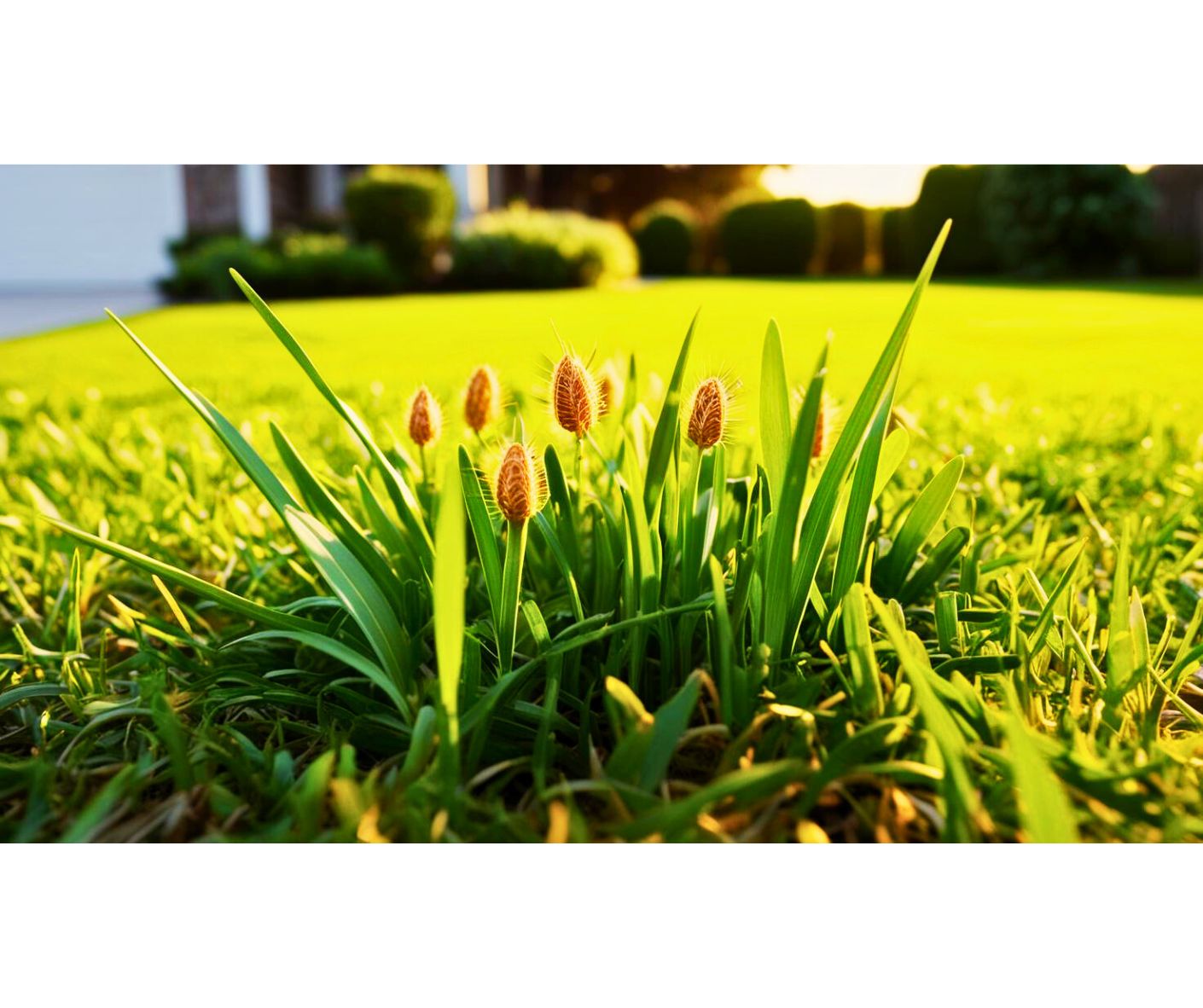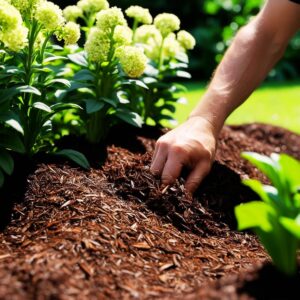Crabgrass Confessions: What Your Lawn Would Say (If It Could Talk)

Crabgrass, the bane of every lawn lover’s existence. This pesky weed can quickly take over your once pristine lawn, leaving you with a patchy, unsightly mess.
But fear not, fellow lawn enthusiasts! With a little knowledge and effort, you can outsmart this pesky intruder and reclaim your lawn.
Understanding Crabgrass: The Invader’s Tactics
Crabgrass is an annual summer weed that thrives in warm climates, sprouting when soil temperatures reach 55°F (12.8°C). Its broad, coarse blades spread rapidly, suffocating the desired lawn grass and taking over bare or thin patches.
The seeds of crabgrass can remain dormant for years, waiting for the right conditions to germinate. This makes long-term prevention crucial for keeping it from invading your lawn.
Climate Conundrum: Finding the Perfect Grass for Your Patch of Earth
The climate in your region is a major factor in determining the best grass type for your lawn. For instance, if you live in a region with cold winters and hot, humid summers, a cool-season grass like Kentucky bluegrass or fine fescue may be a good choice.
In warmer climates, warm season grasses such as Bermuda grass or Zoysia grass are more suitable. These grasses are better adapted to high temperatures and drought conditions.
pH-nomenal Lawn Care: Balancing the Acid Test
Soil pH plays a crucial role in nutrient availability and overall soil health. Crabgrass, like many weeds, thrives in acidic soils. By maintaining a soil pH between 6.0 and 7.0, you can create an environment that is less favorable for crabgrass and more conducive to healthy grass growth.
To determine your soil’s pH level, you can purchase a soil test kit from a local garden center or send a soil sample to a local agricultural extension office for analysis. Once you know your soil’s pH, you can take steps to adjust it if necessary. If your soil is too acidic, you can add lime to raise the pH. If your soil is too alkaline, you can add sulfur to lower the pH.
The Thick & Thin of Lawn Care (Mostly Thick, We Hope)
Thick, healthy lawns naturally suppress crabgrass by leaving little room for its growth.Use high-quality grass seed appropriate for your climate and maintain a consistent overseeding schedule.
Water deeply but infrequently to encourage deep root growth, which strengthens the lawn. Regular mowing at the appropriate height for your grass type helps shade the soil and prevent crabgrass seed germination.
Pre-emergent herbicides: the superhero that stops crabgrass
Applying a pre-emergent herbicide in early spring is an effective way to prevent crabgrass seeds from sprouting. Pre-emergents form a chemical barrier on the soil surface, inhibiting the growth of new seedlings.
Timing is crucial-apply before the soil consistently reaches 55F (12.8C). Choose a pre-emergent product designed for crabgrass prevention and follow the manufacturer’s instructions for best results.
Correct Watering Practices – Give it a drink , don’t drown! 
Deep, infrequent watering is key to preventing crabgrass. Water your lawn deeply once a week, allowing the water to penetrate the soil 6-8 inches. This encourages deep root growth, making your lawn more drought-tolerant and less vulnerable to weeds.
The best time to water your lawn is in the early morning. This allows the water to soak into the soil before it evaporates. Avoid watering in the evening, as wet grass overnight can lead to fungal diseases.
Mow-tivation for a greener lawn
Mow at the highest recommended setting for your grass type to create shade and prevent sunlight from reaching crabgrass seeds. Never cut more than one-third of the grass blade at a time to reduce stress on the lawn.
Keep mower blades sharp to ensure a clean cut that promotes healthier grass growth. Avoid scalping the lawn, which creates ideal conditions for weeds to move in.
Fertilization: Giving Your Lawn the Vitamin Boost It’s Been Begging For
Proper fertilization helps strengthen grass, making it less susceptible to crabgrass invasion. Apply a slow-release fertilizer that matches your grass type and local climate.
Over-fertilization can backfire, creating lush conditions that may encourage weed growth, so follow recommended application rates. Fertilize in the fall to build strong roots and in the spring with a balanced formula to support growth.
The Art of Overseeding
Overseeding is a powerful tool in the fight against crabgrass. By sowing high-quality grass seed, you can thicken your lawn and create a dense, healthy turf. This thicker turf will crowd out crabgrass and other weeds, making it harder for them to establish themselves.
The best time to overseed is in the fall or spring. During these seasons, the soil temperature is ideal for seed germination and root development. Overseeding in the fall allows the new grass to establish itself before winter, while overseeding in the spring gives the new grass a head start on the growing season.
Targeting Crabgrass Like a Lawn Ninja!
Even with your best efforts, crabgrass might still show up in some spots. For these areas, you can use a targeted post-emergent herbicide that’s safe for your grass type, or, if the infestation is small, hand-pulling can do the trick.
When pulling by hand, it’s most effective to do so before the weeds drop any seeds. Just make sure to dispose of the pulled crabgrass carefully to avoid spreading those pesky seeds all over again.

Mulching: The Lazy Gardener’s Secret to Winning the Weed War!
Mulching garden beds and lawn edges is a simple way to stop crabgrass from setting up camp in those areas. Organic mulches like bark or wood chips block sunlight from reaching the soil, making it tough for weeds to grow.
To get the best results, keep your mulch layer at least 2-3 inches thick. Make sure to refresh and replenish it as needed to keep your weed defense strong throughout the year.
Aeration: Giving Your Lawn a Breath of Fresh Air!
Compacted soil is like a VIP lounge for crabgrass and weeds, giving them just the conditions they love. Aerating your lawn once a year breaks up that compacted soil, allowing water, nutrients, and air to reach the grassroots.
The best time to aerate is in the fall or spring, depending on your grass type. Pair it with overseeding to fill in bare spots and help your lawn grow in thicker and stronger.
Throw some shade at that crabgrass
Shadier areas of your lawn are less likely to be infested with crabgrass. This is because crabgrass thrives in full sun.
Planting trees or shrubs can help to create shade, especially during the hottest parts of the day. However, be mindful of the tree species you choose, as some can have invasive root systems that may damage your lawn
Timing and Consistency: The Dynamic Duo in the Fight Against Crabgrass!
Prevention works best when it’s part of a consistent lawn care routine. Keep an eye on soil temperatures in early spring so you can apply pre-emergents at just the right time.
Throughout the growing season, regularly inspect your lawn for any signs of crabgrass making a sneak attack. Be ready to adjust your strategy based on weather patterns and the overall health of your lawn.
Eco-Friendly Lawn Care: Saving the Planet, One Weed at a Time!
Try natural alternatives like corn gluten meal, which works as a pre-emergent herbicide without the harsh chemicals. Pair that with compost and organic lawn care to boost soil health and discourage weeds over time.
Planting a mix of grass species can increase your lawn’s resilience against crabgrass by promoting biodiversity. Not only will these eco-friendly practices keep weeds at bay, but they’ll also create a healthier, happier environment.
Get your Handy Dirty
Hand-pulling crabgrass is a labor-intensive but effective way to remove it from your lawn. It’s best to pull crabgrass when the soil is moist, as this makes it easier to remove the entire plant, including the roots.
Be patient and persistent when hand-pulling crabgrass. It’s important to remove the entire plant, including the roots, to prevent it from regrowing. While this method may be time-consuming, it’s a chemical-free way to keep your lawn crabgrass-free.
Crabgrass: 0, Your Lawn: 1 (and Counting)
Successful crabgrass control requires a comprehensive approach combining prevention, monitoring, and appropriate response measures. By following the principles outlined in this guide and maintaining consistent lawn care practices, you can significantly reduce crabgrass problems while promoting a healthy, vibrant lawn.
Remember that building a healthy lawn is a marathon, not a sprint. Focus on long-term soil and turf health rather than quick fixes. With patience and proper techniques, you can develop a lawn that naturally resists crabgrass and other weed invasions while providing a beautiful outdoor space for your family to enjoy.

Additional Resources
- Local extension offices
- University research stations
- Soil testing laboratories
- Weather monitoring services
- Climate Zones across the United States
- Farmer’s Almanac
- NOAA
By staying informed and following best practices, you can win the battle against crabgrass and maintain a healthy, attractive lawn throughout the growing season.
Roll up your sleeves, grab your gardening tools, and let’s reclaim our lawns from this pesky weed! The time is now – your lawn thanks you!